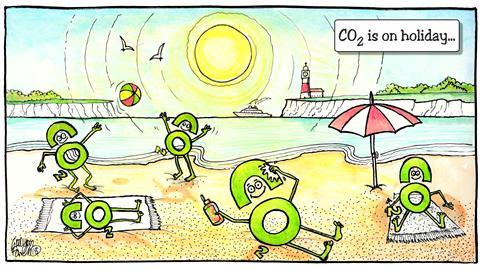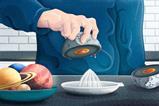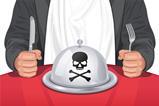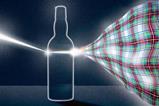And what does it have to do with the Haber–Bosch process?

With global warming, ‘carbon dioxide shortage’ may sound bewildering. But that is what Europe, and in particular the UK, experienced this summer.
CO2 is used extensively in the food and drink industry, so a shortage has serious consequences. For example, the bubbles in carbonated drinks come from dissolved CO2 gas, and frozen food is stored on dry ice, the solid form of CO2. Another crucial use is as an anti-microbial agent that extends the shelf life of meat and vegetables. The shortage meant supermarkets had to limit the delivery of frozen food, and pubs had to ration beer.
From fertiliser to frozen food
Usually, the industry uses the CO2 by-product from Haber–Bosch plants, which make nitrogen fertiliser. Farmers can grow better crops if they enrich the soil with nutrients, mainly potassium, phosphorous and nitrogen. Nitrogen is the most important plant nutrient, but though it is abundant in air, it exists in a form that plants cannot use. The Haber–Bosch process converts atmospheric nitrogen into a form that plants can uptake.
The Haber–Bosch process consists of two main reactions:
CH4 + H2O ⇌ CO + 3H2
N2 + 3H2 ⇌ 2NH3
The first is known as steam reforming, and mixes methane, extracted from natural gas, with steam to produce hydrogen. The second stage combines hydrogen and nitrogen gas to produce ammonia. Ammonia can be used directly or developed further into other types of nitrogen-based fertilisers.
The carbon monoxide produced in steam reforming is used to extract even more hydrogen, in the Water Gas Shift Reaction:
CO + H2O ⇌ CO2 + H2
CO2 is also produced in this reaction. This is captured and sold on to other industries, like food and drink.
So, why the shortage?
The CO2 shortage was the result of scheduled closures, supply issues and hot weather. Haber–Bosch plants are seasonal and often close for maintenance over summer when demand for fertiliser is low. This year, most of the UK’s plants closed all at the same time, and the picture was not much different in Europe. On top of that, rising natural gas prices limited fertiliser production, and the summer heatwave caused increased demand for cooling beer and fizzy drinks.
Clearly, agriculture isn’t the only industry depending on the Haber–Bosch process. If plants changed their maintenance scheduling to keep some CO2 production running for non-agricultural customers, they might avoid causing future shortages, but may struggle to run at a profit. More likely, it is time for food and drink industries to seek out alternative CO2 suppliers, perhaps biogas or waste incineration plants – otherwise this shortage is unlikely to be the last.














No comments yet